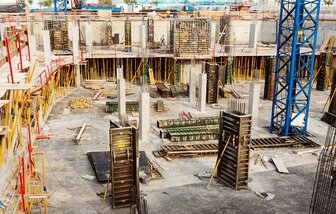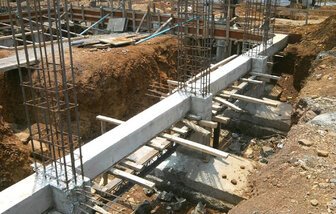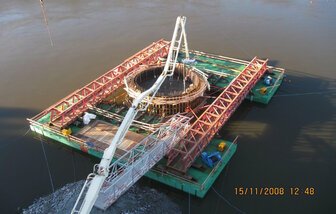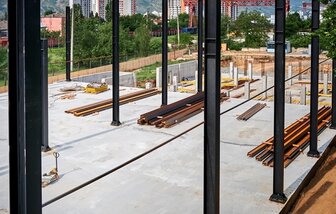Caisson Foundations: All You Need to Know
A Learn all about piled foundations in the UK, including what they are, why they are chosen, and the different types available. Find out how piled foundations are constructed and why they are important for building stability. Consult with a qualified engineer or foundation specialist to determine the most suitable foundation for your specific requirements
What are Caisson Foundations?
Our comprehensive guide on caisson foundations. Whether you are a homeowner, builder, or engineer, understanding the basics of caisson foundations is essential when it comes to constructing a strong and stable structure. In this article, we will cover everything you need to know about caisson foundations, from their definition and types to their advantages and common applications.
Caisson foundations, also known as drilled pier or bored pile foundations, are deep foundation systems used to support structures in areas with unstable soil conditions.
These foundations are constructed by drilling deep into the ground and then filling the holes with concrete or other suitable materials. The term “caisson” refers to the watertight structures used to facilitate the drilling process and prevent the holes from collapsing.

There are two main types of caisson foundations: floating caissons and open caissons.
Floating Caissons
Floating caissons are large watertight boxes that are constructed on land and then floated to the desired location. Once in position, the caissons are sunk into the ground, and the soil is excavated from inside the box. The empty box is then filled with concrete, creating a stable foundation.
Open Caissons
Open caissons, also known as drilled shafts or caisson piles, are cylindrical holes drilled into the ground using a drilling rig. The holes are typically filled with concrete or reinforced with steel reinforcement cages before the construction of the superstructure. Open caissons are commonly used when the soil conditions are too unstable for shallow foundations.
Caisson foundations offer several advantages over other types of foundation systems:
- Increased Load-Bearing Capacity: Caisson foundations can support heavier loads compared to shallow foundations, making them suitable for tall or heavy structures.
- Stability in Unstable Soil: By drilling deep into stable soil or rock layers, caisson foundations provide stability in areas with poor soil conditions.
- Resistance to Lateral Forces: The cylindrical shape of caissons allows them to resist lateral forces, such as those caused by wind or earthquakes, more effectively.
- Reduced Settling: Caisson foundations minimize the risk of settlement, ensuring the long-term stability of the structure.
Caisson foundations are widely used in various construction projects, including:
- High-rise buildings
- Bridges and overpasses
- Industrial structures
- Waterfront structures
- Retaining walls
- Transmission towers
Caisson foundations are an important element in construction projects where stability and load-bearing capacity are crucial. By understanding the basics of caisson foundations, you can make informed decisions and ensure the safety and longevity of your structures. Whether you are planning to build a high-rise building or a simple retaining wall, consulting with a qualified engineer is essential to determine the most suitable foundation system for your project.
Soft Strip foundations
Learn about soft strip foundations, a type of shallow strip foundation commonly used in the United Kingdom. Discover how they work, their advantages, and considerations to keep in mind
Trench fill foundation
Trench fill foundations are similar to strip foundations but differ in that the trench is filled with concrete rather than individual concrete or masonry blocks.
Piled foundation
Piled foundations are used when the soil conditions are challenging or when the load on the foundation is particularly heavy. This type of foundation involves driving or drilling deep piles into the ground
What is a raft foundation?
Raft foundations are a popular choice for many construction projects, providing a stable and durable base for buildings. Explore the benefits of raft foundations, the construction process
Piled raft foundation
Piled raft foundations combine the advantages of piled foundations and raft foundations. They involve the use of both piles and a large concrete slab to distribute the load over a wider area.
Caisson foundation
Caisson foundations, also known as pier foundations, are used in areas with a high water table or poor soil conditions. This type of foundation involves drilling or excavating
Pad foundation
Pad foundations, also known as isolated footings, are used to support individual columns or posts. They consist of a single concrete pad that distributes the load from the column to the soil
Building foundation hub
At Total, we are dedicated to providing you with the essential knowledge and resources you need to build a strong foundation in various fields. Whether you are a student, professional, or simply curious a
Ready to start your project?
Let's Work Together
To get started, for general enquiries simply complete the form below. Provide us with your project details, and our team will review your requirements. We will then get back to you with a customised solution that fits your needs. Whether you have a small-scale project or a large-scale development, we have the expertise and resources to handle it. Once we have received your submission, you will receive a confirmation email (Please check all your email boxes)
If you prefer, and have a project in mind and seeking a price you can also send us your project documents and any photographs directly to Price@totalregen.co.uk. We will carefully examine your documents and provide you with a competitive quote together with a timescale from inception through to completion for your project.








